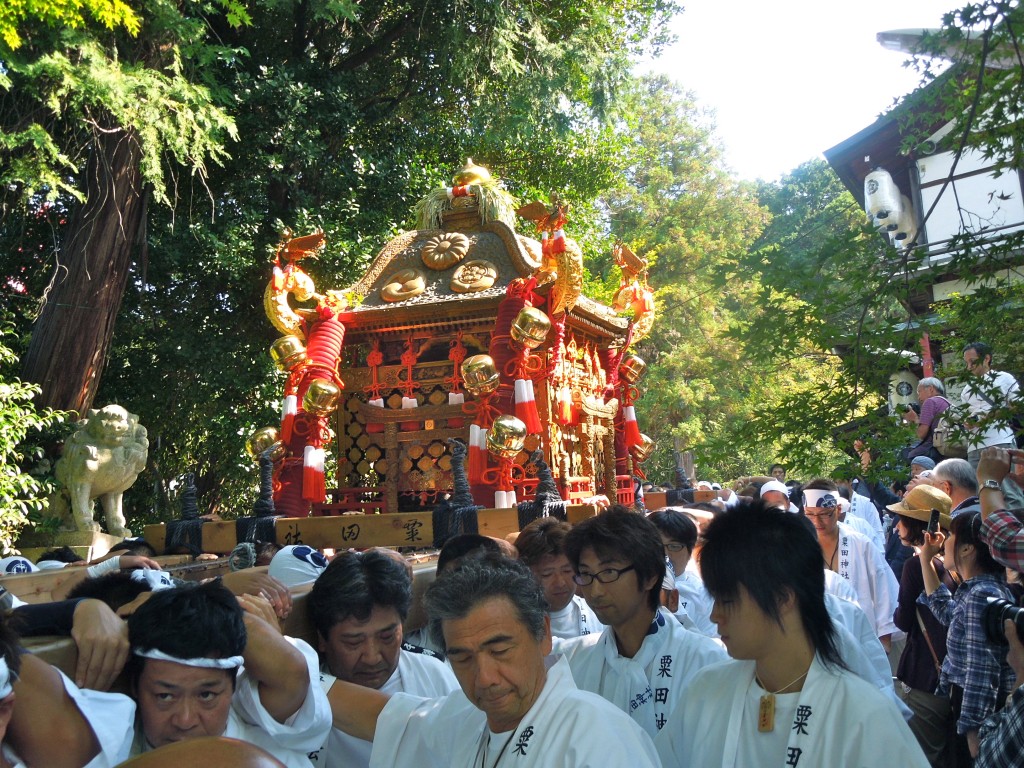
The rather gorgeous mikoshi bearing the shrine's kami being carried out of the shrine and around the parish
Another gorgeous day of autumn sunshine in Kyoto, and another glorious weekend festival at the intriguing Awata Shrine on the eastern side of Kyoto. The shrine used to be part of a Shinto-Buddhist complex based around its neighbour Shoren-in, a well-endowed temple because of its close imperial connections. Awata is not one of Kyoto’s well-known shrines, and it’s a relatively modest shrine nowadays, but there’s a sense of having enjoyed great prestige in the past. For a small shrine, it hosts a big festival!
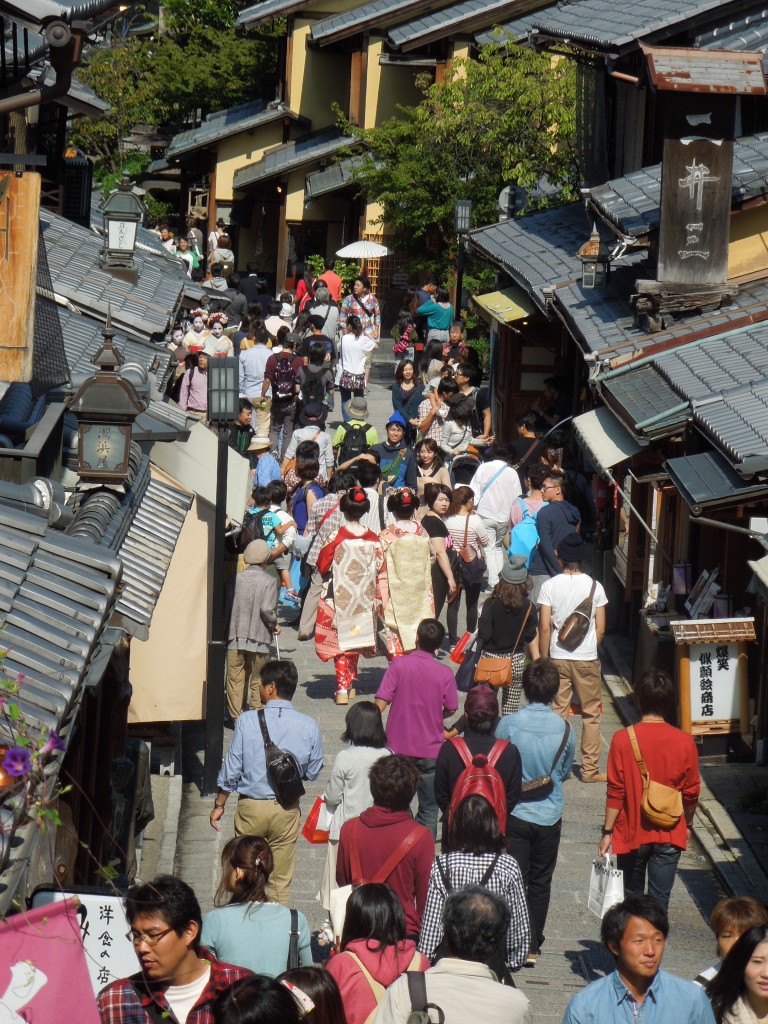
The holiday weekend crowds on Ninensaka leading from Kiyomizu, colourful and good-natured in the autumn sunshine. Awata Jinja lies a 20 minute walk away, through Maruyama Park and opposite the entrance to Heian Jingu.
Awata stands to the east of the city, just off the road that leads from Heian Shrine to Kiyomizu Temple – a fine walk that leads one through centuries of history and past attractive shops selling traditional fare. It’s some time since I did the walk, put off by its touristy nature, but actually it’s rather charming even when crowded on a holiday weekend.
Awata Jinja is up a steep flight of stairs, famous in autumn for its tunnel of coloured leaves, and the shrine has several points of interest:
• It was the tribal shine of the Awata clan, who lived in the area before Kyoto was built in 794
• It specialises in the prevention of illness and has views over the Kyoto basin towards the western hills
• it came to be protector of the eastern side of the city, particularly in the days of the Tokaido which ran from Edo (Tokyo) to nearby Sanjo Bridge
• It has an Ebisu statue to which Yoshitsune prayed for the revival of the house of Genji
• It has a Daijingu hall said to have originated in the 9th century as residence of the love child of poet-womaniser Ariwara no Narihara and the Saigu (virgin princess) of Ise!
On the second weekend in October there is a marvellous evening festival of paper floats, spectacularly lit up by lanterns – which I missed! Instead I got to see the mikoshi parade the following day when the kami is transferred into a portable shrine and carried around the shrine parish. There was a children’s mikoshi, and a very adult mikoshi with burly drunken men. Carrying the heavy beamed mikoshi down the stairs was a perilous affair, with ropes attached at the back for the crowd of onlookers to pull on to stop the whole thing cascading the steps.
Sarutahiko led the way, as he is the kami of guidance thanks to his role in the Kojiki myths where he shows the way to Ninigi no mikoto and his heavenly companions. The earthly deity was followed by tall kenboko poles, 8 meter high and 60 kilos in weight, at the top of which is a bell which when rung appeases evil spirits and helps attract attention of those in the area (ringing it requires great skill and brought a round of applause from those watching).
The overall quality of the processional elements and the large number of participants all suggested the shrine’s former grandeur. Apparently the evening procession of lantern-lit floats is even more spectacular, and I’ll be making a special effort to attend next year, as well as the Iwami kagura plays that precede it presenting episodes from the Izumo myths (the shrine’s kami belong to the Izumo lineage.)
.
********************************************************************************************************************************************
For the significance of the kenboko, and details of all the kenboko festivals in Kyoto, see this page http://www.kyobunka.or.jp/gaiyoue/kene.html
For a 27 second youtube video of the procession, together with sounds of the mikoshi bearers and the trailing kanabou metal rods, see here
For a two-minute view of the spectacular lantern floats, see http://www.youtube.com/watch?v=8hevsDsYsRc
For a five-minute view of the kagura play enacting the slaying of the Orochi monster by Susanoo, see here.
*********************************************************************************************************************************************
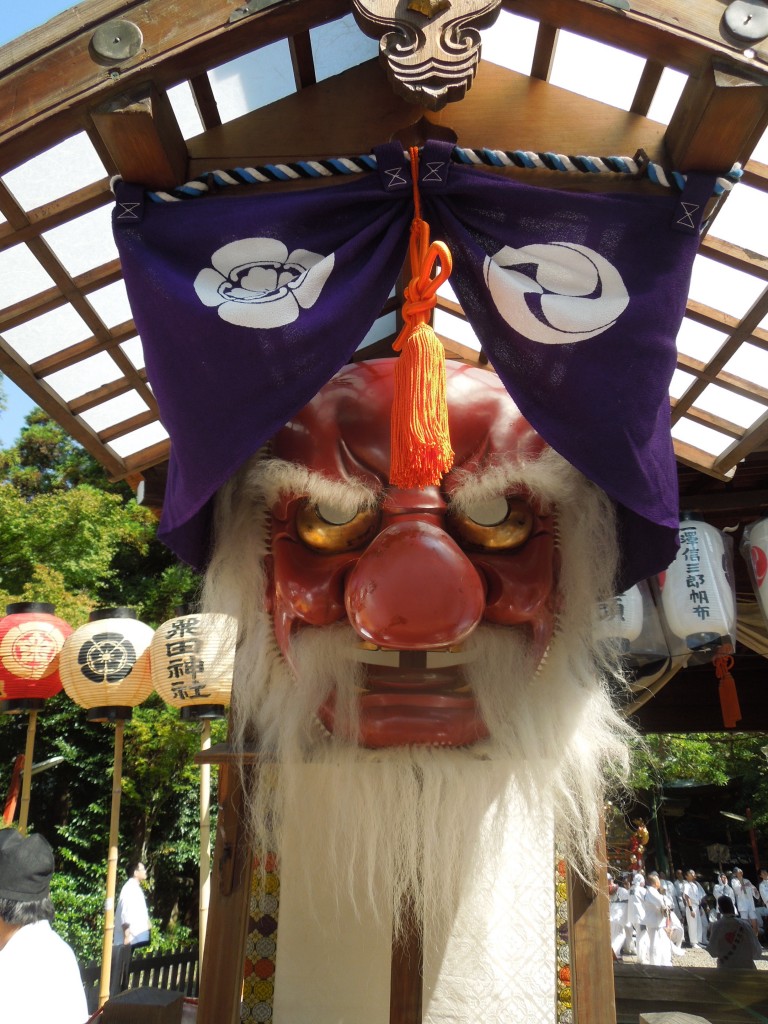
The very earthy deity Sarutahiko, who led the way in the procession. The shrine's kami belong to the Izumo rather than Yamato lineage.
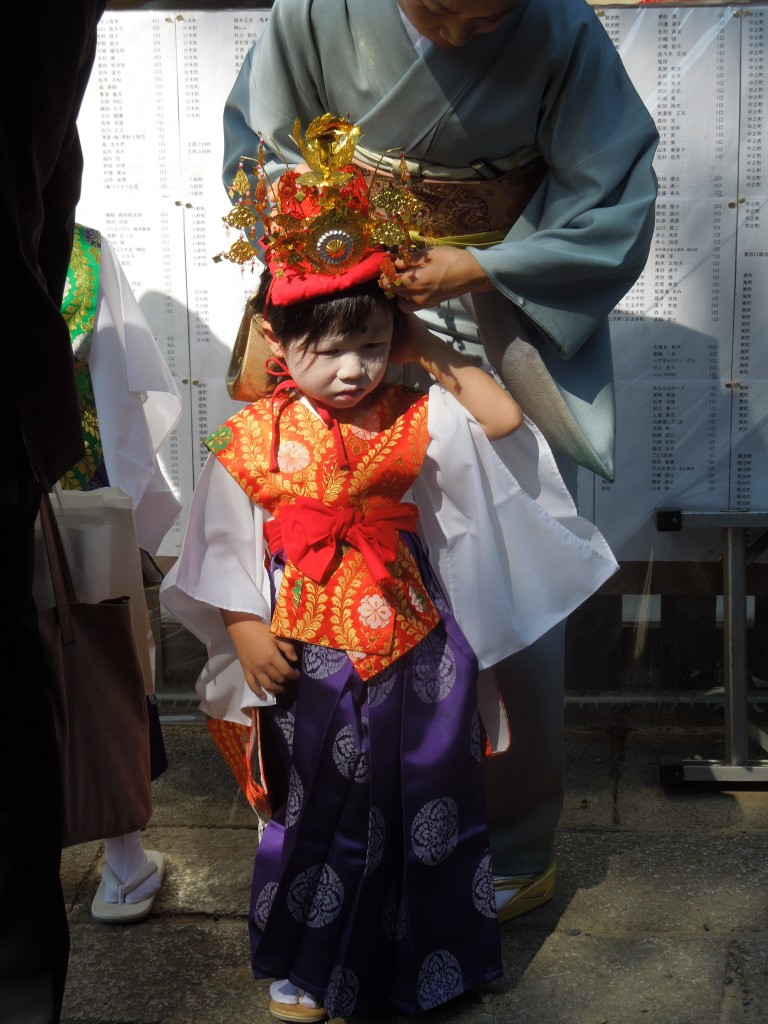
The festival's 'chigo', now more or less a mascot but in former times a vessel for the kami
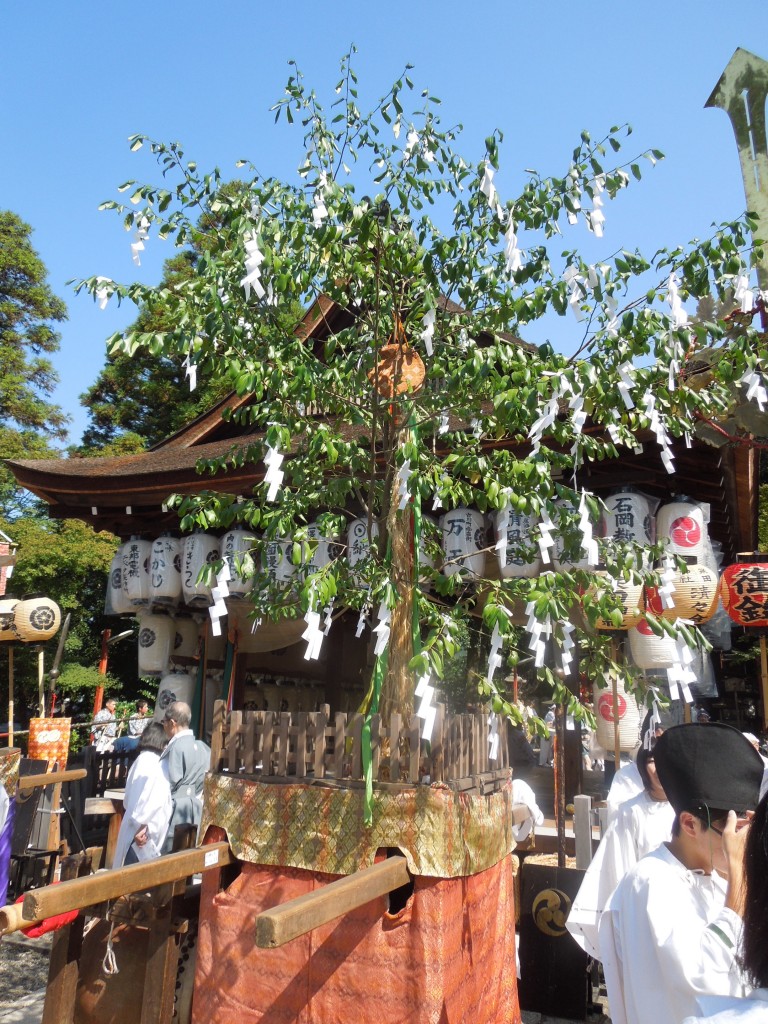
A sakaki float, echoing the original sakaki tree used in the festival at the Rock Cave myth. As well as paper streamers, there's an ornament looking like a small brass mirror.
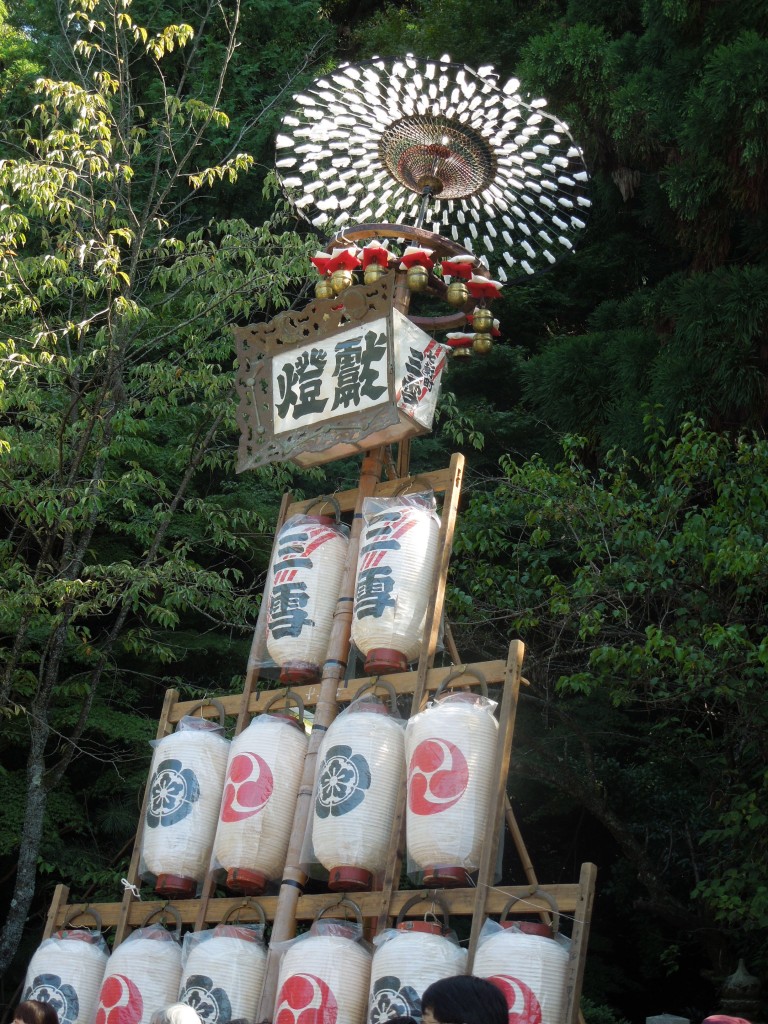
One of the lantern floats on display in the shrine compound
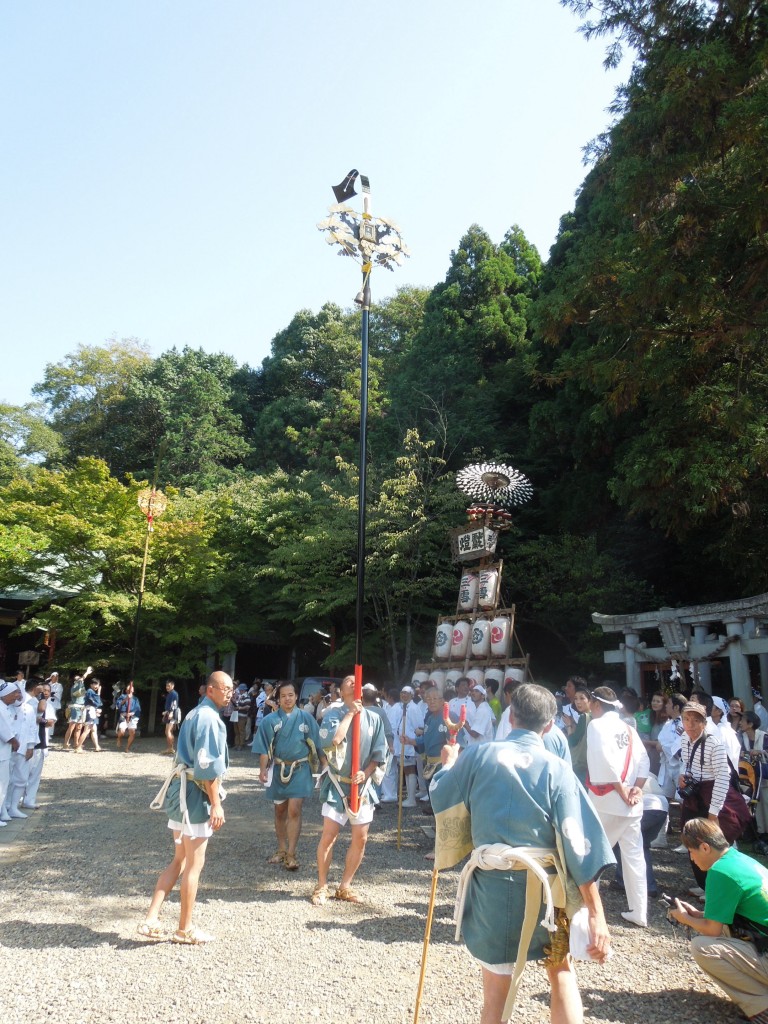
Ringing the bell on one of the tall kenboko ceremonial poles in the shrine compound prior to departure
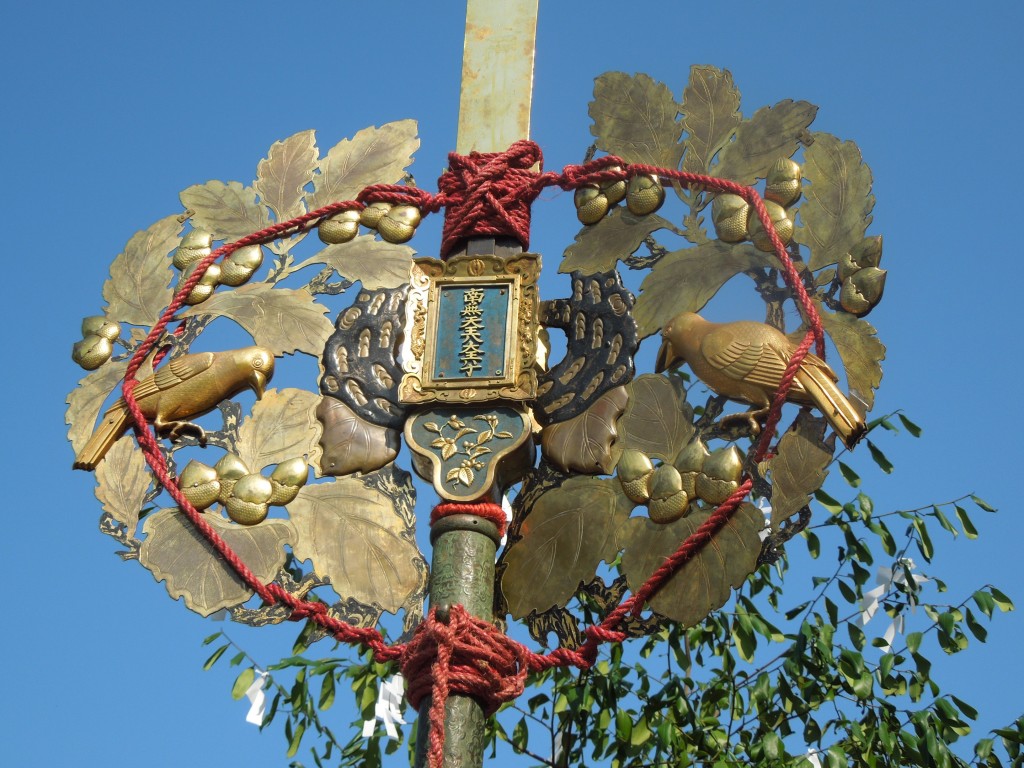
Close-up of one of the kenboko poles, each of which is carved with an ornate design of symbolic import
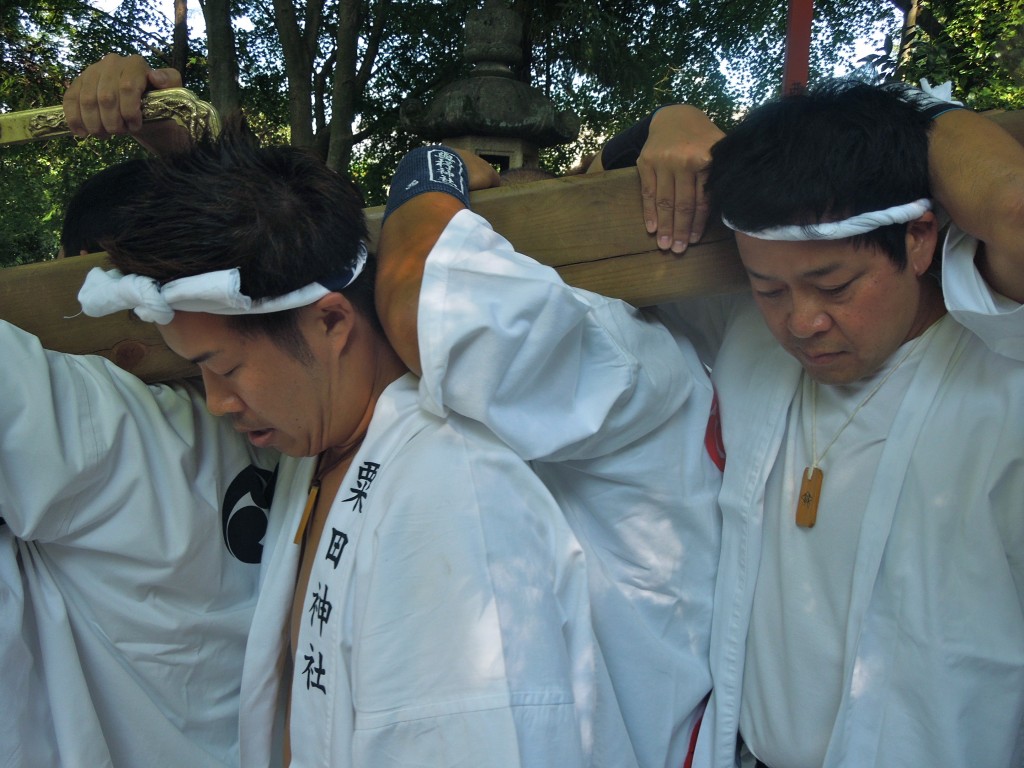
Carrying the heavy beams of the mikoshi is no easy matter, and replacements were on hand for those who needed a break
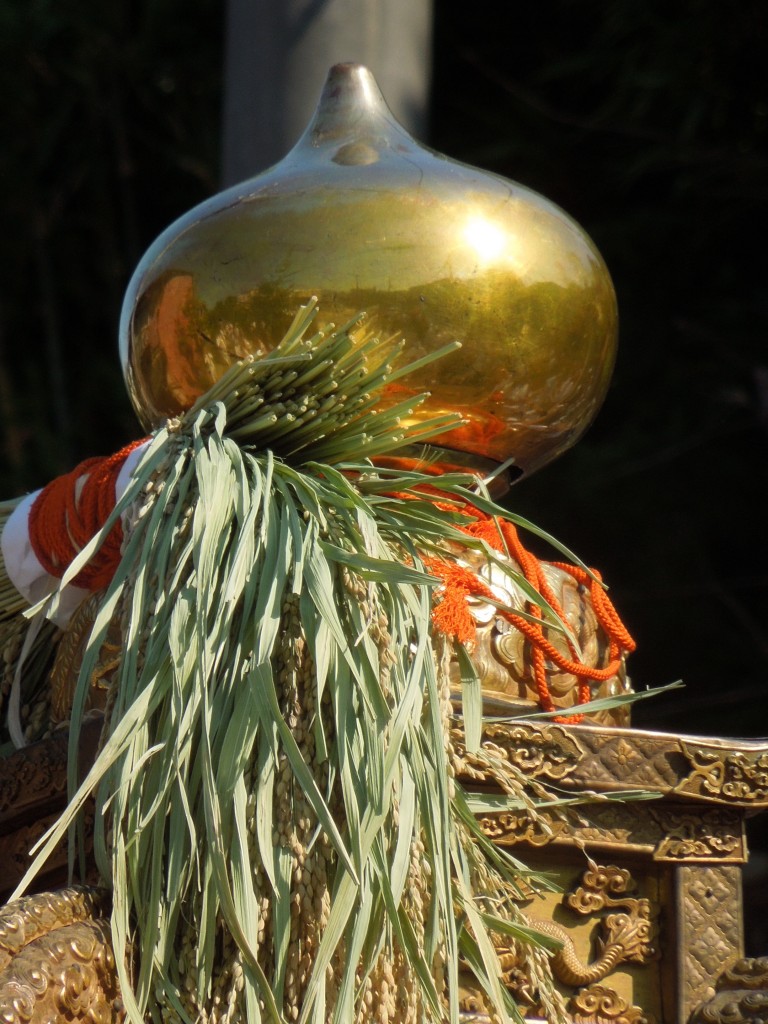
Close-up of the top of the mikoshi, with a sprig of rice for the harvest season and a syncretic wish-fulfilling jewel
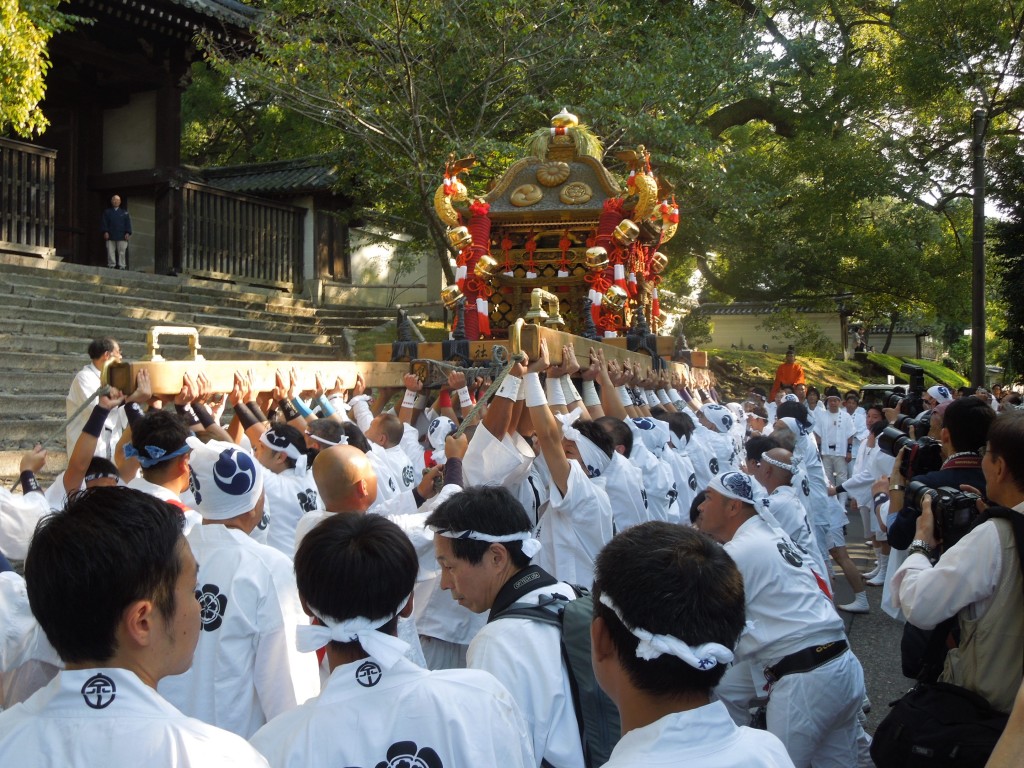
During the procession there are pauses to raise and jostle the mikoshi, which takes a lot of sheer muscle power from some of the inebriated participants.
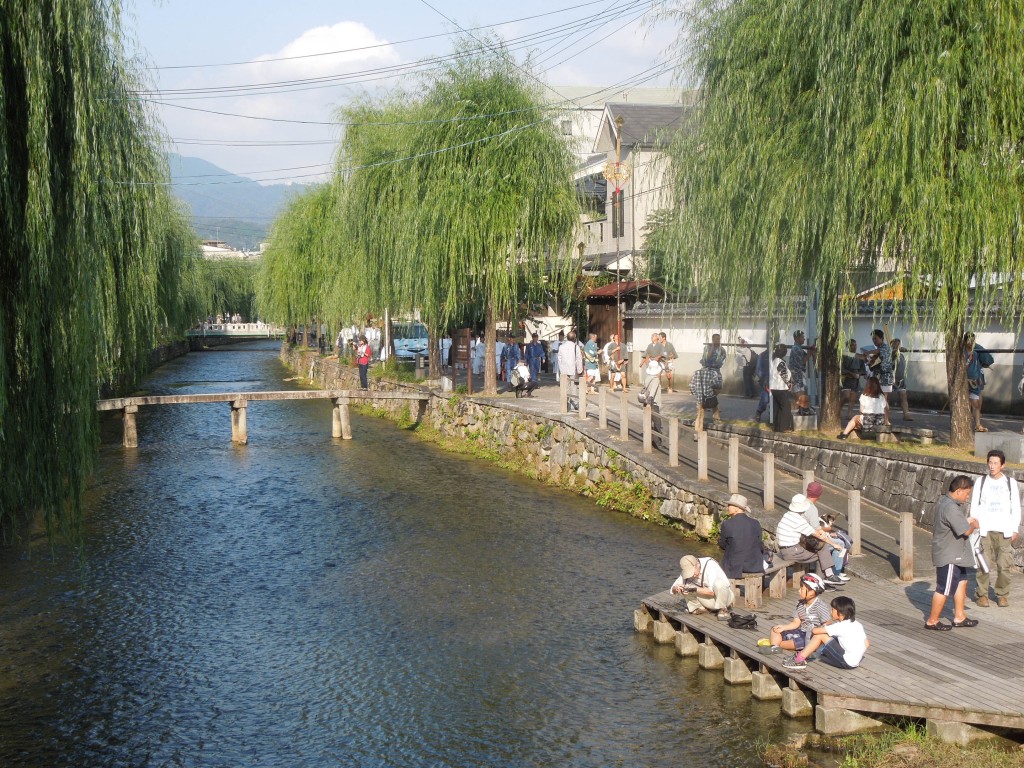
Some of the shrine's precincts have a delightful old-worlde charm. Here part of the procession can be seen passing along the side of the Shirakawa.
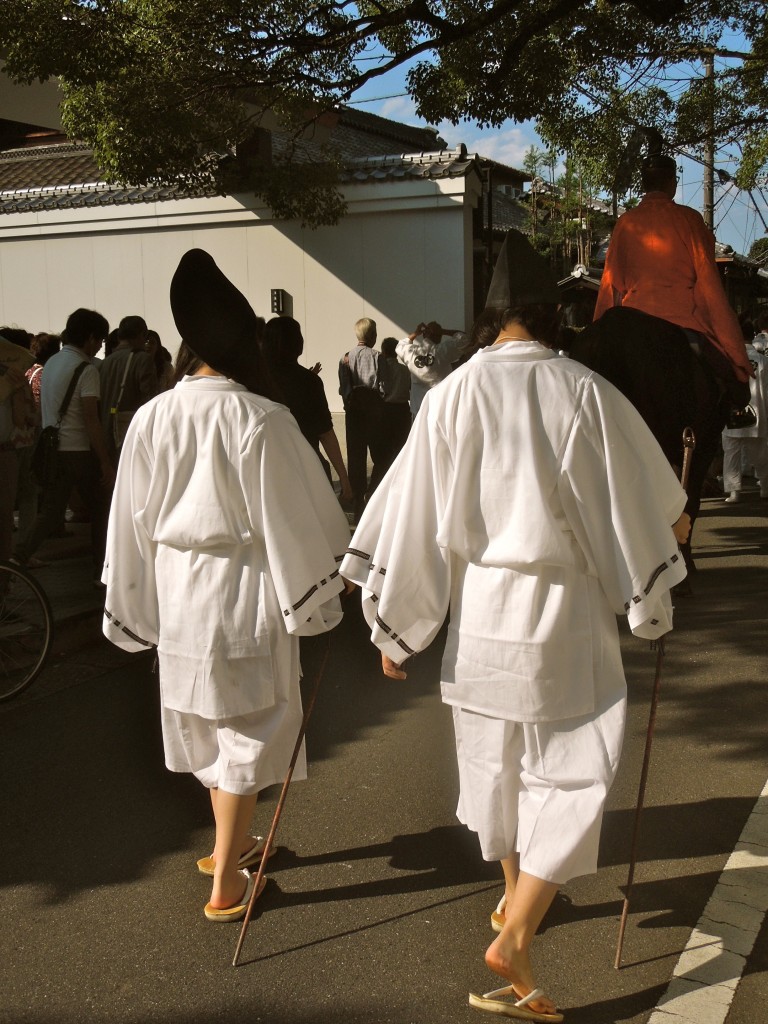
At the back of the procession, behind the high priest on his black horse, walked two girls dragging 'kanabou' (metal poles) along the ground. The sound is thought to acoustically purify the surrounding area.

Leave a Reply